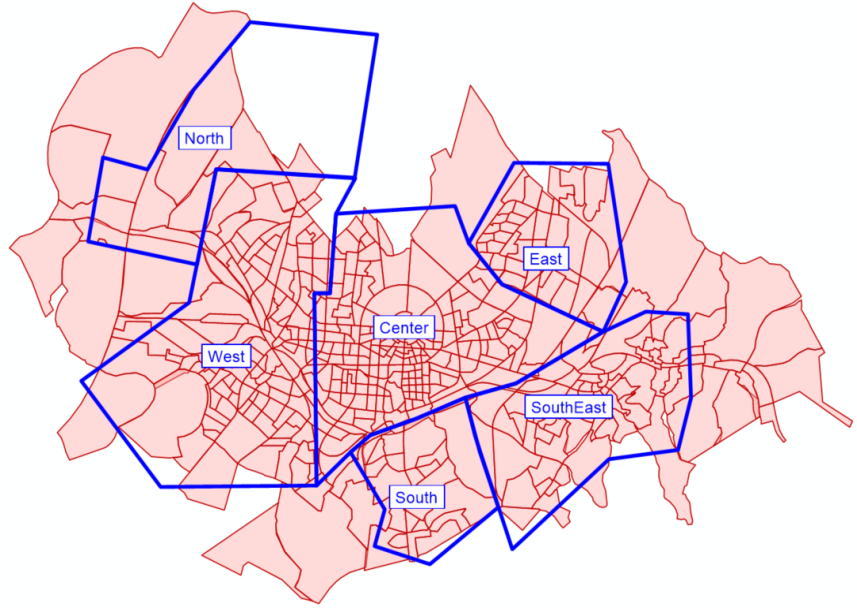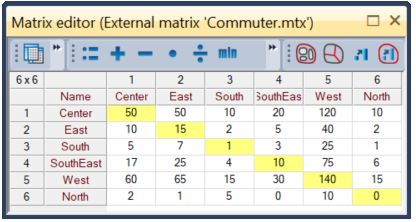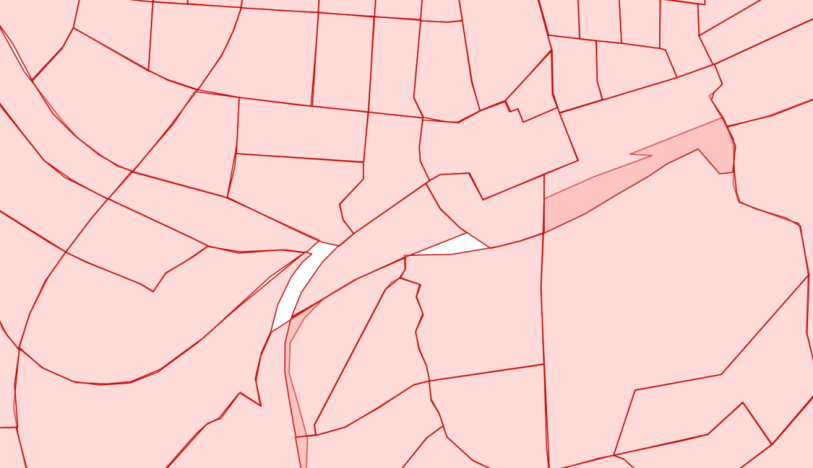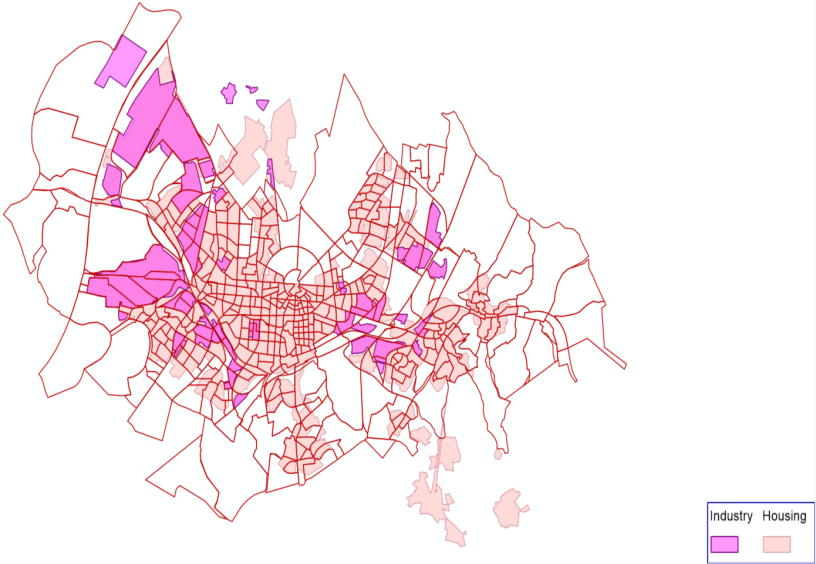The Calculate split factors procedure enables the integration of demand matrices based on a zone system other than the current one. A typical use case is a commuter demand at the community level to be integrated into an existing model. In some places, the existing network is finer, in others rougher than the community layer. The zone boundaries of the two systems overlap in some places:


Often, the existing model's zone system has tiny gaps in some places, but these gaps should not cause commuter demand to be lost.

The distribution of commuter demand should be based on a residential building layer on the source side and a building layer with workplace numbers on the target side.

For this case, the operation generates so-called split factors by intersecting the layers involved, which can be used to convert demand matrices at the community level into matrices based on the zone system of the existing model. The actual transformation of the matrices is done with the matrix editor function Split.
If different split factors are required on the source and target sides, these are calculated in two independent procedure steps. The split factors can also be calculated if no residential building layer is available and it is assumed that the relevant population is evenly distributed among the respective zone surfaces.
The following input data is required to calculate the split factors to integrate an external matrix into an existing model:
-
Layer for zones in the existing model
-
Layer for zones of the matrix to be integrated
-
Weighting layer, e.g. a development layer; if no layer is available, the layer for zones of the matrix to be integrated can simply be selected.
Result: The calculated split factors are saved to a column of a user-defined table. They can be used in the split function for external matrices.

